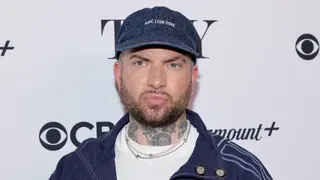August 30, 2014
Bisexuality From A-Z - Part 1 of 3
Kilian Melloy READ TIME: 4 MIN.
In honor of the 15th anniversary of Celebrate Bisexuality Day on Sept. 23rd, 2014, BiNet USA, GLAAD and a host of other bisexual and LGBT organizations are launching Bisexual Awareness Week (Sept 20 - 27, 2014) to draw attention to the awesomeness that is the bisexual community.
To kick start affirming discussions about the bisexual community, its history and future, here is the first part in a three part series, "Bisexuality A-Z."
A is for Asexual - A recent survey of the University of California college system found 5% of students identifying as asexual. AsexualAwarenessWeek.com defines an asexual person as one "who does not experience sexual attraction." Some people who identify as asexual or "ace" experience romantic attractions while other asexuals identify as "aromantic" and do not generally desire romantic relationships. Members of the ace community can also identify along the bisexual spectrum and may use terms like bi-romantic and/or pan-romantic to indicate their asexual romantic attractions to more than one gender.
B is for Bisexual - According to gender and sexuality expert Robyn Ochs, "Bisexuals are people who acknowledge in themselves the potential to be attracted - romantically and/or sexually - to people of more than one sex and/or gender, not necessarily at the same time, not necessarily in the same way, and not necessarily to the same degree." The bisexual spectrum can include identity labels like pansexual, fluid, queer, non-monosexual, multisexual, polysexual, and pomosexual.
C is for Camille Holthaus - A warm, witty woman full of compassion and just the right amount of cynicism, Camille Holthaus is a rising star in the bisexual community. As the new Chair of the Minnesota-based non-profit the Bisexual Organizing Project, Holthaus works to "build, serve and advocate for an empowered bisexual, pansexual, fluid, queer, and unlabeled (Bi+) community to promote social justice." The Bisexual Organizing Project (BOP) hosts the BECAUSE conference, a yearly gathering for the bisexual community, its experts, thought leaders and organizers.
D is for Dr. David Lourea - After a two year battle, BiPOL activist, AIDS educator, and therapist Dr. David Lourea persuaded the San Francisco Department of Public Health to recognize bisexual men in their official AIDS statistics. Dr. Lourea died in San Francisco on Nov. 10, 1992 from kidney failure associated with AIDS, but his work still lives on via the David Lourea Papers, a public collection at the San Francisco Public Library.
E is for Ellyn Ruthstrom - As president of the Bisexual Resource Center, the oldest and longest running bisexual non-profit organization, Ellyn is a pillar of the bisexual world who provides support and resources to bisexual people across the nation. In March 2014 the Bisexual Resource Center (BRC) partnered with GLAAD to launch #bihealthmonth which drew attention to bisexual health inequity. In June 2014, Ruthstrom co-chaired a historic gathering of bisexual health researchers alongside Fenway Health to form the Bisexual Research Collaborative on Health (BiRCH).
F is for Dr. Fritz Klein - In 1974 Dr. Fritz Klein published "The Bisexual Option: A concept of one hundred percent intimacy," and then went on to found the American Institute of Bisexuality and Journal of Bisexuality. Klein also created the Klein Sexual Orientation Grid (KSOG) to measure sexual orientation by expanding upon the earlier Kinsey scale.
G is for Gary North - In 1987, Gary helped co-found the North American Bisexual Network, which eventually went on to change its name to BiNet USA. North also published the first national bisexual newsletter called Bisexuality: News, Views, and Networking. A former newspaper editor, North has been a backbone for the bisexual community for nearly three decades and is considered by many to be a "founding father" of bisexuality.
H is for Health - Bisexual people often report poorer health than their gay, lesbian and heterosexual counterparts. Some of the health inequities currently being researched:
I is for Intersex - Studies show an estimated one in 2,000 babies is born with a reproductive or sexual anatomy and/or chromosome pattern that doesn't seem to fit typical definitions of male or female. The terms used to describe the conditions that cause these variations are "intersex" or "DSD" (Differences of Sex Development). According to the Intersex Initiative, intersex people can also identify as members of the LGBTQ community though some may see their being born intersex as a medical condition or unique physical state.
J is for Rev. Janet Edwards - Rev. Janet Edwards, was ordained in 1977 and stood trial in Nov. 2006 for performing a Presbyterian marriage ceremony for two women. Rev. Edwards was unanimously acquitted by The Presbyterian Church (USA) and came out as bisexual in 2012. Rev Edwards describes herself as "a bisexual woman who has always been capable of loving someone of either gender, but who joined in love and continues to build a life with a wonderful, caring man." In June 2014, Rev. Edwards helped pass historic measures in The Presbyterian Church (USA) so that Presbyterian ministers can perform same-sex marriages where it is legal.
Kilian Melloy serves as EDGE Media Network's Associate Arts Editor and Staff Contributor. His professional memberships include the National Lesbian & Gay Journalists Association, the Boston Online Film Critics Association, The Gay and Lesbian Entertainment Critics Association, and the Boston Theater Critics Association's Elliot Norton Awards Committee.






